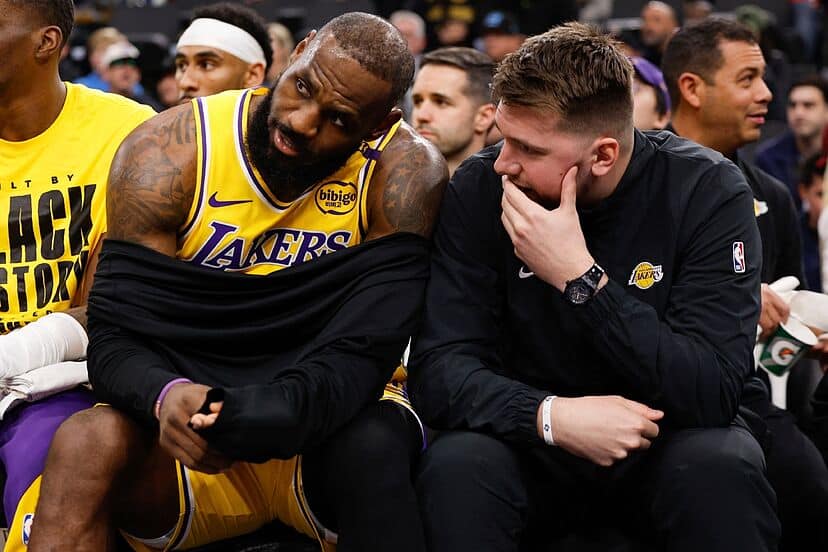From the outside, it’s easy to assume that Derrick White’s integration into the Boston Celtics rotation has been seamless. Coming to the team and knowing the head coach along with most of the core rotation certainly helps in that regard. From a basketball perspective, some turbulence should have always been expected.
Ime Udoka might come from the Greg Popovich coaching tree, but the systems aren’t exactly the same. Similar but different, like clementines to oranges. Learning curves are a natural part of the integration process. That’s true for any job. The only difference is that when most people make a mistake it’s not in front of thousands, or millions, of people.
“It’s getting better. I’m feeling more and more comfortable as the games go on. I expected there to be ups and downs, and some games are better than others. Just learning the system, how they want to guard, how they want to play offense, and just getting more comfortable each game,” White said after playing what can be considered as his most complete game in a Celtics uniform.
Now eleven games into his Celtics career, White is showing glimpses of fitting into Udoka’s methodology. Granted, his debut after joining from the San Antonio Spurs was as good as anyone could have asked for, but since then it’s been a bumpy road. However, against the Charlotte Hornets, roots were starting to sprout from the seeds the coaching staff has been planting for the last few weeks.
“Getting pulled aside by the coaching staff, just telling me little things that I need to work on, what they’re looking for. And at the end of the day, just try to compete, and that’s what I’m trying to do,” White said. “Try not to mess it up. They were on a good stretch before I got here, I just wanted to come in and help them continue that. It’s obviously been fun winning, competing every night, just looking for it each and every time, knowing that we’ve got a nice team that can go out there and compete with anybody.”
White is certainly competing, and in fairness hasn’t messed too many things up in his limited time with the team, and against in Charlotte on Wednesday, we witnessed his most complete game.
0.5 Offense + Drive & Kick
By this point, we’ve all heard of Udoka’s preference to run an up-tempo offense where the rock is essentially a pinball and the players are the flippers. We know that the team is being drilled on quick decision-making and generating quality shooting opportunities. A lot of that philosophy carries over from the Spurs, but everyone has their own take on how to incorporate such as philosophy.
There will be guidelines on when to isolate, when to bail out of a play and flow into high-screen actions, or when to settle for jumpers. Each coach places a different level of importance on rim pressure or floor spacing. It’s what makes basketball so joyous.
From watching the Celtics this season, we know that Udoka likes his team to pressure the rim as much as possible. That doesn’t always mean forcing layups or floaters (they’re 24th in shot attempts within the restricted area, and 15th in non-restricted area paint attempts), but it does mean forcing the defense into a tough spot where help defenders are committed and shooters have found pockets on the perimeter.
In the above play, we see White incorporate two of Udoka’s offensive principles: quick decisions and pressuring the rim. Point-5 offensive schemes are based around knowing what you want to do with the ball almost as soon as it hits your hands, and then acting on that instinct in a timely manner. Here, almost as soon as the Colorado native receives the ball, he changes direction and pressures the rim, collapsing the defense as a result.
Here we have another example of playing within the team’s system and manipulating the defense with quick decision making and rim pressure. A nifty probe dribble draws the attention of three Hornets defenders, leaving Marcus Smart open on the perimeter. Yet, when Smart receives the pass he doesn’t opt to shoot the three. Instead, he, too, quickly initiates a secondary drive after an equally quick decision and finishes with a floater.
The way Boston is playing right now is akin to how most grappling gyms teach their fighters – chain your attacks together – because the first attack might not work, but you’ve forced a defensive move and put the opponent on the back foot. Perhaps the second attack is shut down too, but suddenly, you’re a step ahead in the process, and gaps have formed, and then is the time to strike. No wonder the Celtics are currently ranked 9th for passes out of drives.
Switchability & Physicality
You don’t learn how to be switchable. You either possess the physical traits or you don’t. The same can be said for embracing the physical side of the game. But, you can learn when to switch, how to switch, and when to stand pat – those are all systematic decisions implemented by the coaching staff and passed down to the players for execution.
“We’ve thought for years, that Derrick was a really good fit with our best players. He’s an excellent defender, he makes the right play on offense over and over. He’s a guy that only cares about winning, as you can see in his stats defensively with regards to a willingness to put his body on the line, activity, shot challenges,” Brad Stevens said after the Celtics acquired White at the trade deadline.
This clip begins with White entangled in a physical battle with former Celtic, Terry Rozier, as the pair battle for dominant position. As Miles Bridges drives towards the hoop, White pre-switches (switching without contact) to defend the lane and contest Bridges’ shot attempt.
Bridges shot ends up clanking off iron, and White’s work on that possession is done.
Sometimes the best form of defense is to “muck things up” and force an offense to play scrappy basketball, make them feel under pressure, and rush their sets. When an entire defensive unit can switch the way the Celtics do, and no matter what you try as a unit, there’s always a body on you, things likely feel a little overwhelming. Above, White switches between two players, get two tips on the ball, and the Hornets are forced into a late-clock shot attempt.
White also ranks fourth for charges drawn, among players who have participated in 30 or more games this season. Having two guards in White and Smart who are willing to put their bodies on the line for the sake of the team only serves to strengthen the team’s “grind it out” identity. But when those changes come courtesy of intelligent switches, that’s ideologically perfect for what this team is trying to achieve on that end of the floor.
Perfection is the detriment of success
Nothing in life is perfect. Blemishes are usually what defines true beauty. Striving for perfection is always the goal, in any walk of life, but accepting high-quality success will always ensure your motivation levels remain at a premium. It’s the same with basketball; you’re going to miss rotations, take a charge inside the restricted area, and make some bone-headed passes to fans in the front row. Failure is a fact of life and one that should be embraced as a glorious learning opportunity.
White’s performance against the Hornets was one of his best in a Celtics jersey so far, but it wasn’t perfect, because like it or not, perfect doesn’t exist. And there’s going to be a lot of less-than-perfect games in the coming weeks as he continues to develop a deeper understanding of how the Celtics are approaching things and the nuances between how he did things in San Antonio compared with what Udoka is asking for now.
However, we’re starting to see signs of high-quality success from Boston’s newest rotational piece, and when that happens, it’s safe to say he’s contributing to winning, and that’s all anybody can ask for. All that’s left is for White to continue working towards consistency, and then performances like Wednesday’s will become the baseline at which we measure him.






